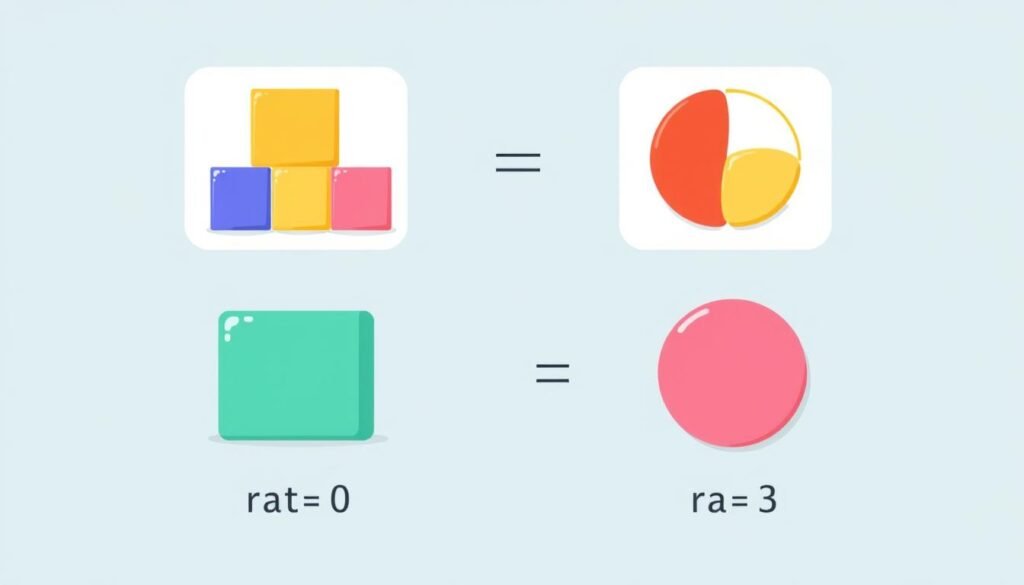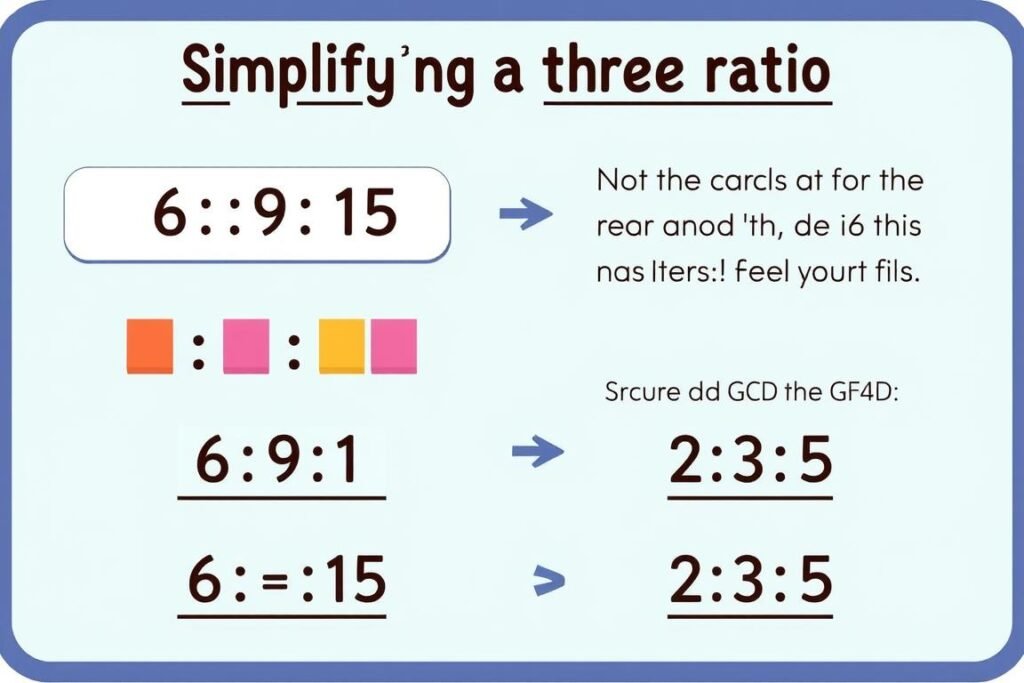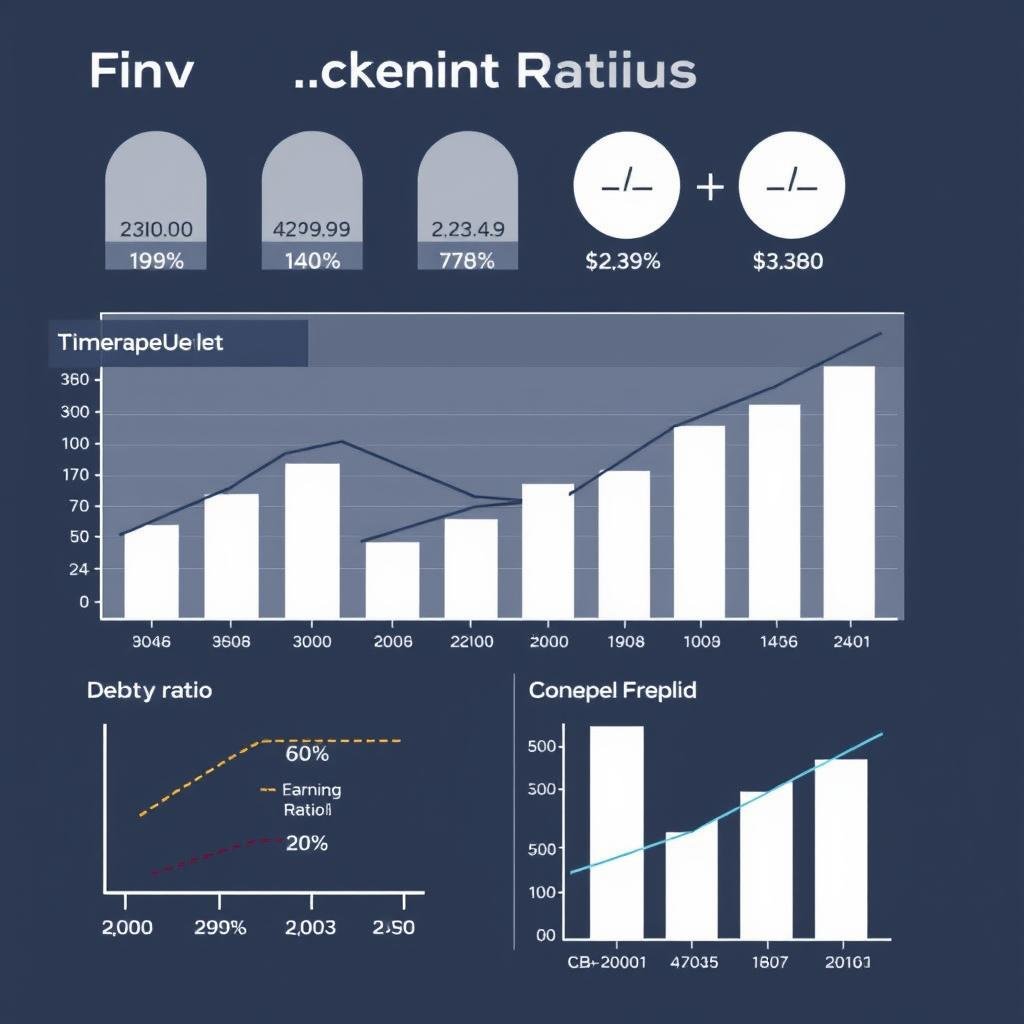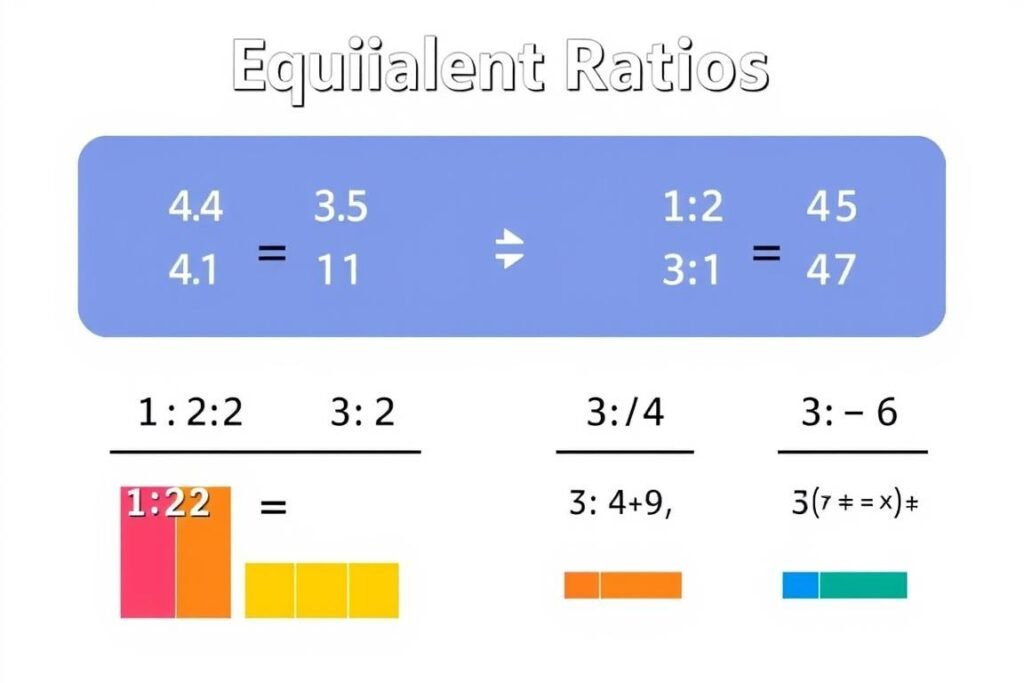Ratios are fundamental mathematical relationships that compare quantities, helping us understand proportions in everything from cooking recipes to financial analysis. Whether you’re scaling ingredients, analyzing financial data, or solving mathematical problems, understanding how to calculate and work with ratios is an essential skill. This comprehensive guide will walk you through everything you need to know about ratios, from basic concepts to practical applications.
What is a Ratio?

Visual representation of a ratio comparing two quantities
A ratio is a mathematical expression that represents the relationship between two or more numbers, indicating how many times one value contains another. Ratios allow us to compare quantities and express their relative sizes or amounts. They help us understand proportions and make comparisons between different values.
Ratios can be written in several different formats:
- Using a colon (a:b) – For example, 3:4
- As a fraction (a/b) – For example, 3/4
- Using the word “to” (a to b) – For example, 3 to 4
Each of these notations represents the same relationship between the numbers. The order of the numbers in a ratio is important, as 3:4 represents a different relationship than 4:3.
Need Quick Ratio Calculations?
Skip the manual work and get instant, accurate results with our online ratio calculator.
How to Calculate a Ratio

Calculating a ratio involves comparing two or more quantities and expressing their relationship. Here’s a step-by-step guide to calculating ratios:
Basic Ratio Calculation Steps
- Identify the quantities you want to compare
- Express the quantities using the same units of measurement
- Write the quantities in the desired order using your preferred notation (colon, fraction, or “to”)
- Simplify the ratio if possible by dividing both numbers by their greatest common divisor (GCD)
Ratio Formula and Examples
The basic formula for a ratio between two values a and b is simply a:b. Let’s look at some examples to understand this better:
| Example | Values | Ratio Calculation | Simplified Ratio |
| Recipe ingredients | 2 cups flour, 3 cups sugar | 2:3 | 2:3 (already simplified) |
| Boys to girls in a class | 15 boys, 10 girls | 15:10 | 3:2 |
| Map scale | 1 inch represents 100 miles | 1:100 | 1:100 |
When working with ratios, it’s important to keep the units consistent. For example, if comparing distances, ensure both measurements use the same unit (either both in miles, both in kilometers, etc.).
Example: Calculating a Ratio
Let’s say we have 8 apples and 12 oranges, and we want to find the ratio of apples to oranges.
- Identify the quantities: 8 apples and 12 oranges
- Express as a ratio: 8:12
- Find the GCD: The greatest common divisor of 8 and 12 is 4
- Divide both numbers by the GCD: 8 ÷ 4 = 2 and 12 ÷ 4 = 3
- The simplified ratio is 2:3
How to Simplify Ratios

Simplifying ratios is an important skill that makes ratios easier to understand and work with. A simplified ratio is one where the numbers have no common factors other than 1.
Steps to Simplify a Ratio
- Find the greatest common divisor (GCD) of the numbers in your ratio
- Divide each number in the ratio by the GCD
- Express the result as a new ratio
Example 1: Simplify 15:25
1. Find the GCD of 15 and 25. The GCD is 5.
2. Divide both numbers by 5:
15 ÷ 5 = 3
25 ÷ 5 = 5
3. The simplified ratio is 3:5
Example 2: Simplify 24:36
1. Find the GCD of 24 and 36. The GCD is 12.
2. Divide both numbers by 12:
24 ÷ 12 = 2
36 ÷ 12 = 3
3. The simplified ratio is 2:3
Pro Tip: When simplifying ratios with large numbers, you can use the Euclidean algorithm to find the GCD. Alternatively, you can save time and ensure accuracy by using our online ratio calculator.
Simplifying Ratios with Multiple Terms
For ratios with more than two terms (e.g., a:b:c), find the GCD of all terms and divide each term by this value.

For example, to simplify 6:9:15:
- Find the GCD of 6, 9, and 15. The GCD is 3.
- Divide each term by 3: 6 ÷ 3 = 2, 9 ÷ 3 = 3, 15 ÷ 3 = 5
- The simplified ratio is 2:3:5
Practical Applications of Ratios
Ratios are used in numerous real-world applications across various fields. Understanding how to work with ratios can help you solve practical problems in everyday life and professional settings.
Cooking and Baking

Recipes often use ratios to ensure consistent results. For example, a basic bread recipe might use a 5:3 ratio of flour to water. Understanding these ratios allows you to scale recipes up or down while maintaining proper proportions.
Maps and Scale Models

Maps use scale ratios to represent large areas on small surfaces. A map scale of 1:100,000 means that 1 unit on the map represents 100,000 units in the real world. Similarly, scale models of buildings or vehicles use ratios to maintain proportional dimensions.
Finance and Investing

Financial analysts use ratios to evaluate company performance and investment opportunities. Common financial ratios include price-to-earnings ratio, debt-to-equity ratio, and current ratio, which help investors make informed decisions.
More Applications of Ratios
Aspect Ratios in Design

Aspect ratios define the proportional relationship between width and height in images, screens, and design elements. Common aspect ratios include 16:9 for widescreen displays, 4:3 for traditional displays, and 1:1 for square formats.
| Display Type | Common Aspect Ratio | Example Resolution |
| HD Television | 16:9 | 1920×1080 |
| Traditional Monitor | 4:3 | 1024×768 |
| Ultrawide Monitor | 21:9 | 2560×1080 |
Mixing Solutions

In chemistry and medicine, solutions are often prepared using specific ratios of substances. For example, a saline solution might use a 9:1 ratio of water to salt. Accurate ratio calculations are crucial for proper solution preparation.
“Understanding ratios is essential in pharmacy, where medications must be prepared with precise proportions to ensure patient safety and treatment efficacy.”
Working with Complex Ratios?
Save time and eliminate calculation errors with our precise ratio calculator tool.
Common Ratio Problems and Solutions

Finding an Unknown Value in a Proportion
One common ratio problem involves finding an unknown value when three parts of a proportion are known. This is often expressed as a:b = c:d, where one value is unknown.
Example Problem
If 3 pounds of apples cost $9, how much would 5 pounds cost?
We can set up a proportion:
3 pounds : $9 = 5 pounds : x
To solve for x, we use cross multiplication:
3x = 9 × 5
3x = 45
x = 15
Therefore, 5 pounds of apples would cost $15.
Scaling Ratios
Another common problem involves scaling ratios to find equivalent ratios with different values but the same proportion.

For example, if a recipe calls for a 2:3 ratio of ingredient A to ingredient B, and you need to use 10 units of ingredient A, how much of ingredient B do you need?
- Set up a proportion: 2:3 = 10:x
- Cross multiply: 2x = 3 × 10
- Solve for x: 2x = 30, so x = 15
Therefore, you would need 15 units of ingredient B to maintain the same ratio.
Tip: When scaling ratios, always check your work by dividing the new values. The result should match the original ratio. In our example, 10 ÷ 15 = 2 ÷ 3 = 0.667, confirming our calculation is correct.
Benefits of Using a Ratio Calculator

While understanding how to calculate ratios manually is important, using a dedicated ratio calculator offers several advantages:
Time Efficiency
A ratio calculator can instantly perform calculations that might take minutes to do manually, especially when working with complex numbers or multiple ratios.
Accuracy
Manual calculations are prone to human error, particularly when simplifying ratios with large numbers. A ratio calculator eliminates these errors, providing reliable results every time.
Versatility
Modern ratio calculators can handle various types of ratio problems, from simple simplification to solving for unknown values in proportions.
Educational Value
Many ratio calculators show the step-by-step process, helping users understand the mathematical principles behind the calculations.
Ready to Simplify Your Ratio Calculations?
Our ratio calculator handles everything from basic simplification to complex proportion problems, saving you time and ensuring accuracy.
Conclusion
Ratios are powerful mathematical tools that help us understand relationships between quantities and solve a wide range of practical problems. From cooking and finance to design and science, ratios play a crucial role in many aspects of our daily lives and professional fields.
While manual ratio calculations are an important skill to develop, using a dedicated ratio calculator can save time, ensure accuracy, and help with more complex ratio problems. Whether you’re a student learning about proportions, a professional working with financial ratios, or someone scaling a recipe for a different number of servings, understanding ratios and having access to reliable calculation tools is invaluable.
Our online ratio calculator offers a simple, accurate way to perform ratio calculations of all types. It can simplify ratios, find unknown values in proportions, and help you work with equivalent ratios quickly and accurately. By combining your understanding of ratio concepts with the power of our calculator, you can tackle ratio problems with confidence and precision.
Start Calculating Ratios with Ease
Experience the convenience and accuracy of our free online ratio calculator. No registration required – just instant, reliable results.